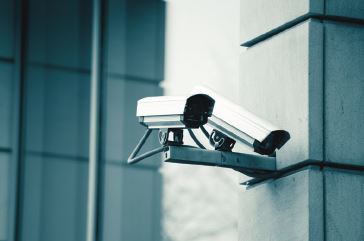With so many security cameras installed, and being installed, the need for constant monitoring and detection continues to rise. An abundance of screens with so few people watching often leads to missed events, yet the cost of hiring more people to observe and assess risks is prohibitive. Fortunately, next-generation security surveillance systems have entered the scene and are already making a big impact.
The next generation of cameras is taking much of the routine human interaction out of the equation. In addition, many of the same algorithms and routines used by gesture technology are being leveraged to quickly design and create working systems that can recognize friend or foe and make rudimentary decisions.

Next-generation intelligent surveillance systems are leveraging new technologies such as gesture recognition to identify potential threats.
Cameras and video capture systems have typically been dedicated and rather simple peripheral devices. These systems often record according to a predefined search pattern and transmit image data back to a centralized hub. In most instances, a human operator is necessary to intervene and remotely control zoom, pan, tilt, focus, color adjust, and track any potential anomalies in the field of view.
As users continue to ask more of them, cameras are no longer just image-transmitting devices, but are now becoming rather complex embedded systems that make decisions themselves. These new iterations of “smart” cameras lead to more functionality and capability, thus allowing organizations to more efficiently manage personnel needs while keeping costs down. These intelligent devices are now able to identify potential problems or hazards, increasing their value as complex security surveillance systems.
For example, if a camera can tell that a cat has moved into the field of view, it can decide that it is not necessary to have human eyes following that cat at the expense of possibly missing another event that is really important. Therefore, if the camera was programmed to recognize and ignore items that it deems are not a major threat, fewer people are needed along the security monitoring chain, providing a higher assurance that real issues get the attention of monitoring officials.
Leveraging video gesture technology Gesture technology is used to issue control commands as a result of the detection of specific movements in the field of view. This technology finds and recognizes movement and patterns to decide whether or not a command has been issued. The core technologies involved in gesture recognition include contrast control, edge detection, edge enhancement, pattern recognition, and even auto tracking. One of the key benefits of this technology is the ability to catalog people, places, and things that are detected in an extensive library for reference at a later date. This library of shapes and patterns can be stored locally in each camera, allowing these intricate systems to detect and assess the difference between harmless movements and characters versus real threats.
These complex camera systems can also be programmed to override any pre-programmed search patterns in order to track an object of particular concern while in the field of view. Currently, the modern densities of nonvolatile storage technologies like NAND Flash can even allow DVR-like functionality so a human can review” false alarms” at a later time.
Many signal processing routines and algorithms have already been proven effective at 3D gesture detection and recognition. The ability to port this functionality to video surveillance translates to local cameras functioning more autonomously. This saves cost due to less monitoring and intervention by people, as machines continue to make higher-level decisions.
Advertisement
Learn more about Mouser Electronics





